Why can you not believe "Treflip is all in the backfoot?"
Because I can't believe it.
Treflips are all in the back foot. And you don't have to use your front foot. Whenever I heard this, I used to think "Yeah, right. but don't I still have to use my front foot?" Somehow, no matter how many times we hear someone says "it's all in the backfoot," we still want to use our front foot.
Let's see if we can believe it by studying the physics and objective mechanics behind Treflips.
Table of Contents
Logical breakdown of the saying "it's all in the backfoot".
This time, we will further break down its meaning logically.
Simulations with 3D models.
Let's eliminate our subjectivity and hear what physics has to say using 3D simulators.
How to do it.
We will also talk about how to realize the theories.
Simulation
Logical Breakdown
Why do people say "it's all in the backfoot."
In the previous video, we saw my front foot leaves my board before it has any chance to give a flick. I also said my type of Treflips are products of rebound, which means as I scoop, the hanger of the rear truck gets bent while storing energy inside. And once it's released, it causes the flip. In other words, Treflips are acts of the rear truck trying to go back to its original state.
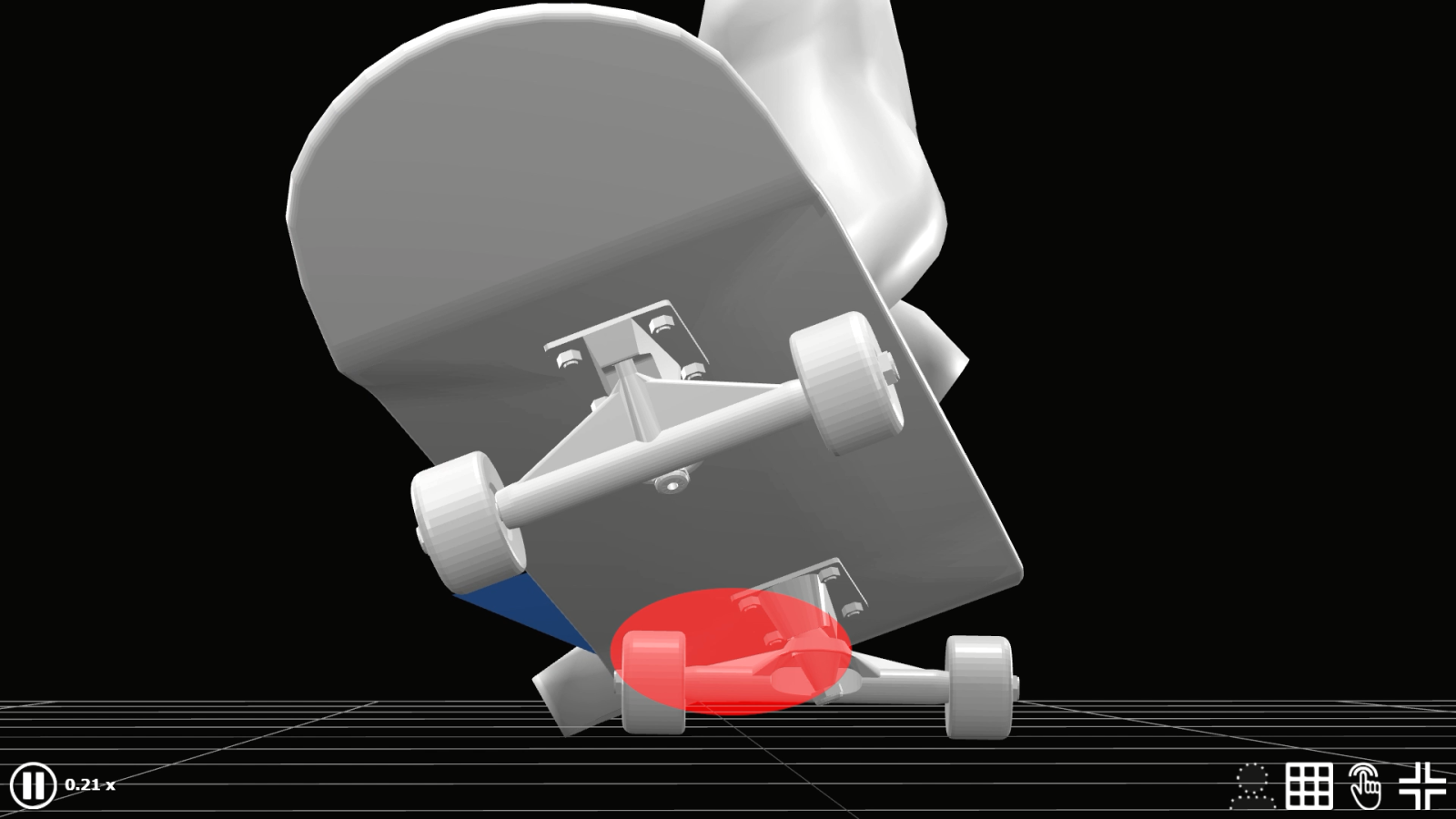
Why do Treflips level out?
It might sound irrelevant but trust me, understanding this definitely helps you better understand the trick itself. Just think about this:
- In ollies, for example, you need to use your front foot to level out your board.
- But in Treflips, somehow, you just need to use your backfoot and it still levels out.
But why? if you think about it, isn't that strange?
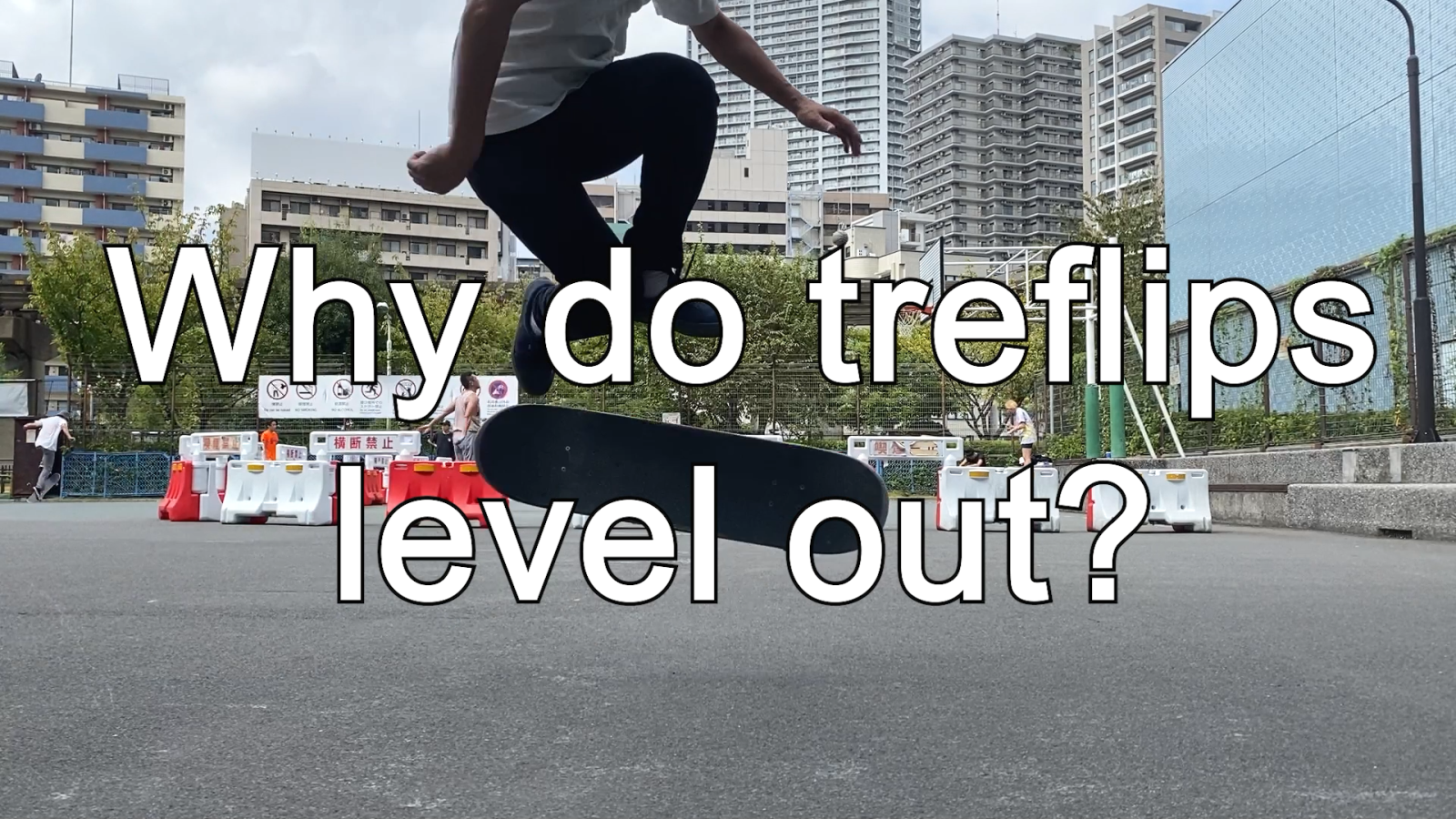
What options do we have to level out?
In order to level out the board, there are two things we could do.
- Push down the nose in the air like ollies.
- Push up the tail somehow.
In my type of Treflips, the front foot doesn't even touch the board, so it cannot be pushing the nose down like ollies.
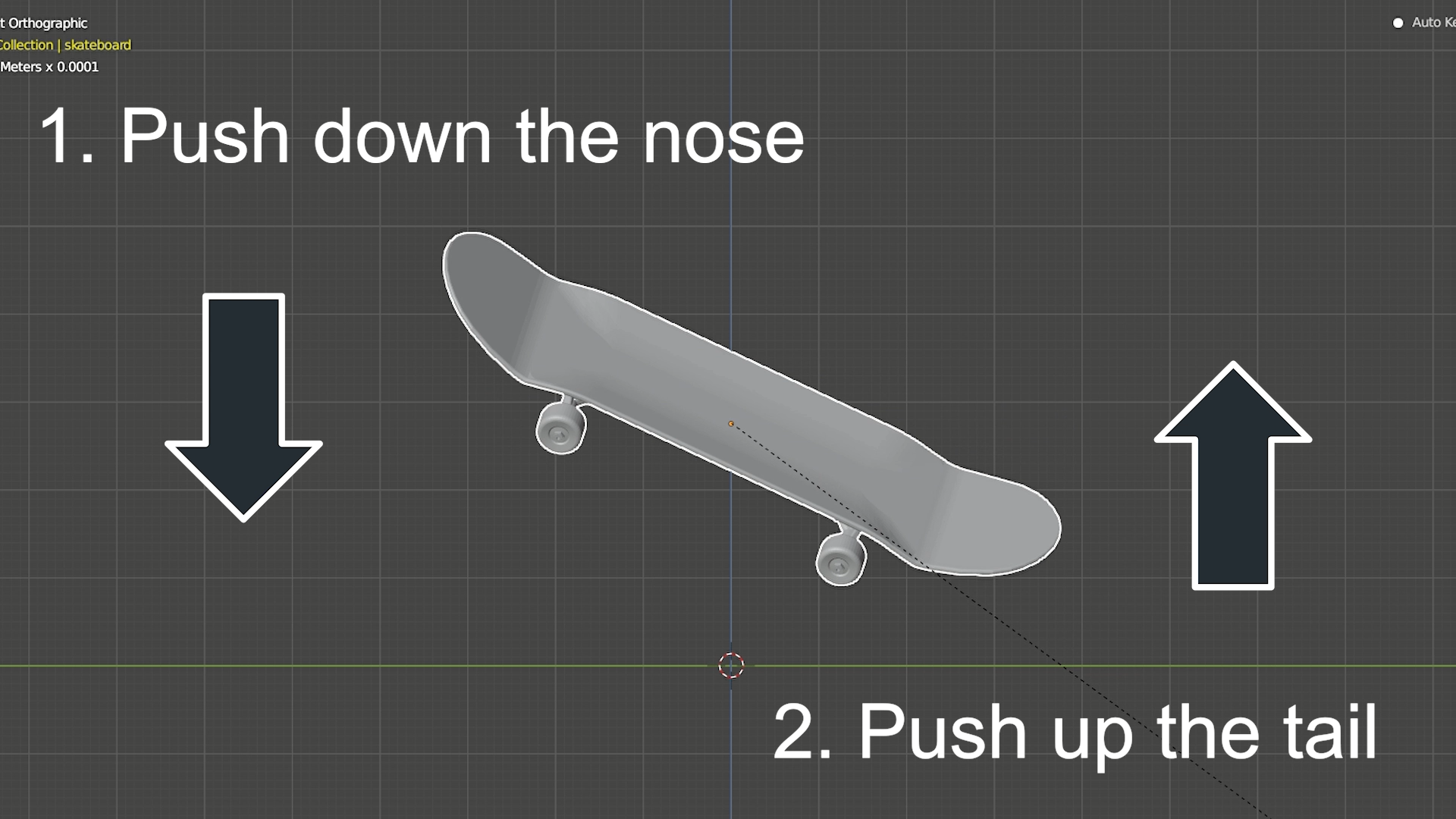
Something pushes up the tail.
So the only way left for the board to be able to level out is to elevate the tail somehow. Which means, there must be something that pushes up the tail. And that is the energy stored in the rear truck. Also, when such energy is released, it does two things.
- It elevates the entire tail up. When combined with the pop, that momentum becomes stronger.
- It also Flips the board. This is because it applies force to only one side of the tail.
With that said, if we go back to the question "Why do Treflips level out?" The answer is “it is because the rear truck pushes the tail back up.” Plus, as a form of a by-product, as it applies force to only one side of the tail, the board flips.
Logically, it might sound right. but it's been just me saying that. Let's hear what physics have to say using a 3D simulator.
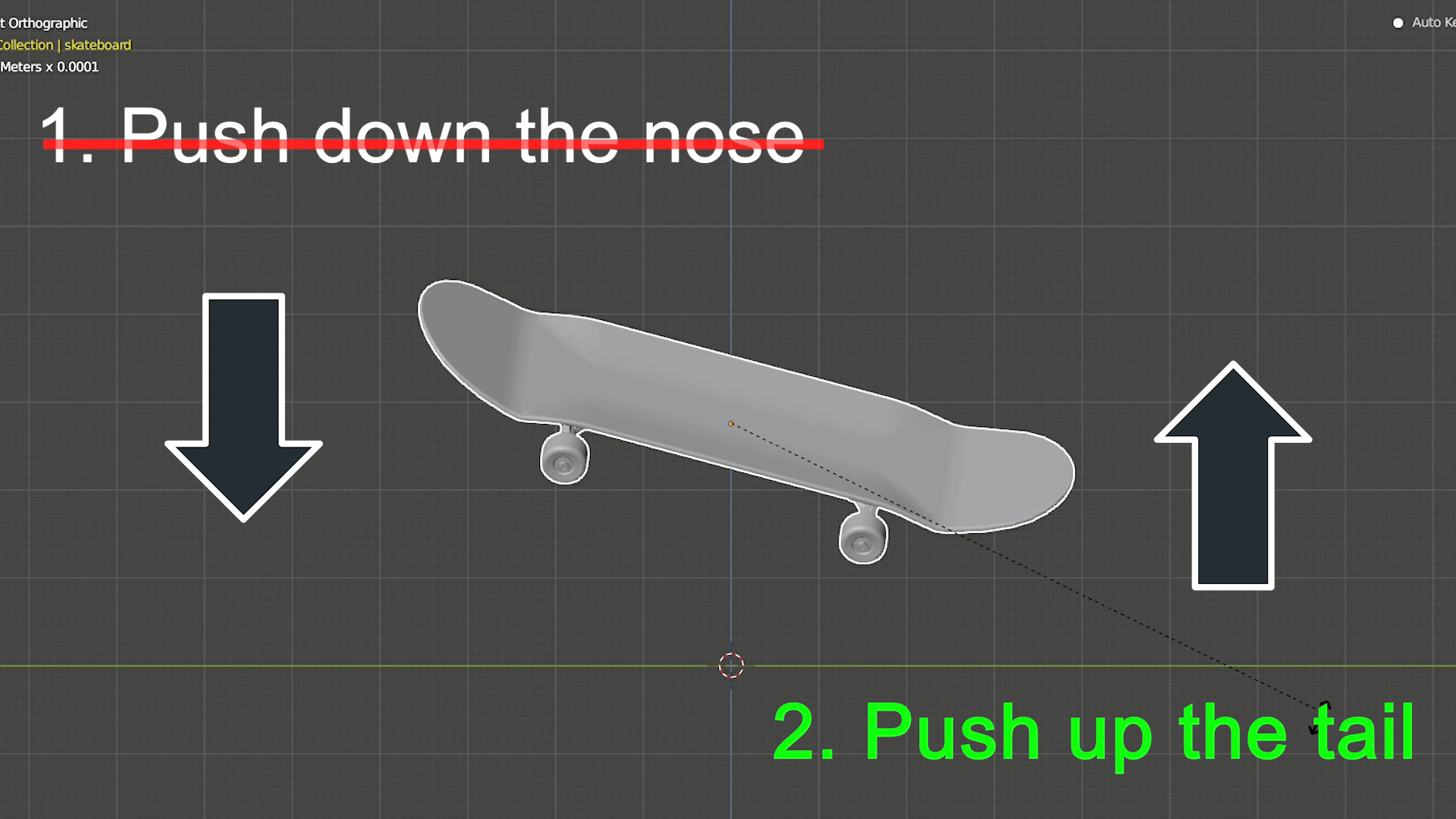
Simulations with 3D models.
Preparation
What we have here is a 3D model of a skateboard whose truck is already bent. Size, weight of the skateboard, gravity and other conditions are virtually the same as the real ones. Although right now, I'm holding its momentum so it cannot move, but the rear truck is trying to go back to its original state.
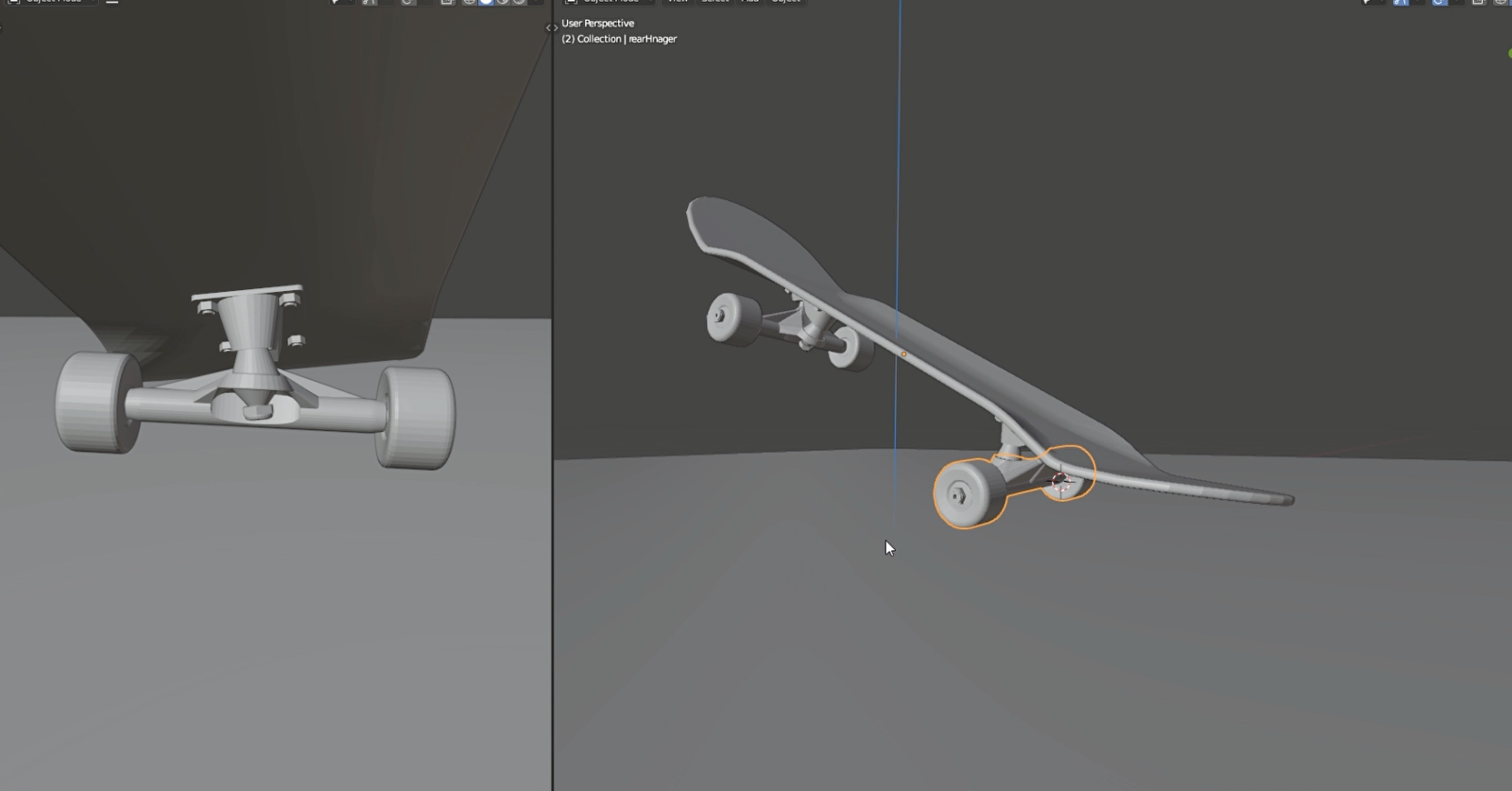
Let's see what happens
If I categorize what happens, there are two things.
- The energy of the truck shoved the tail up into the air.
- It also Flipped the board.
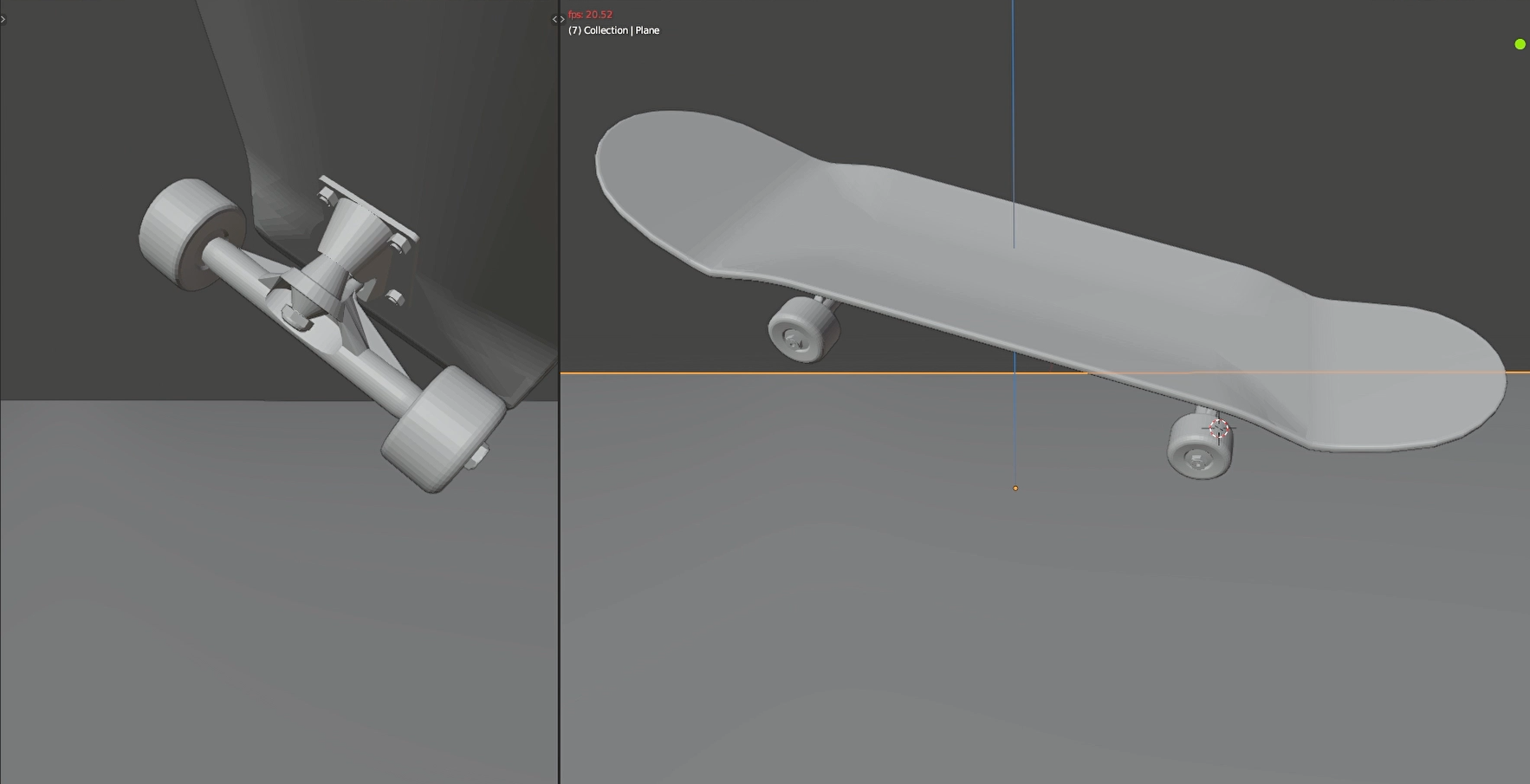
Something is lacking
Although these items may correspond to the previous hypothesis that we talked about earlier, as you can see, the energy of the rear truck does not seem strong enough to complete the full 360 kickflip rotation. As a result, the board lands primo and the kickflip rotation stops right after touching the ground. So in reality, we need to find a way to give our board longer duration of time in the air as well as stronger momentum of kickflip rotation.

Something pushes up the tail.
And that is when the importance of the scoop comes in. As you scoop, the tail hits the ground and the board bounces against it so your board will be able to have longer duration of time in the air. Simultaneously, by scooping, it is only one side of the tail that hits the ground. Which means, that side of the tail functions like the rear truck and pushes itself upward, which eventually accelerates the flip that was originally started by the rear truck.
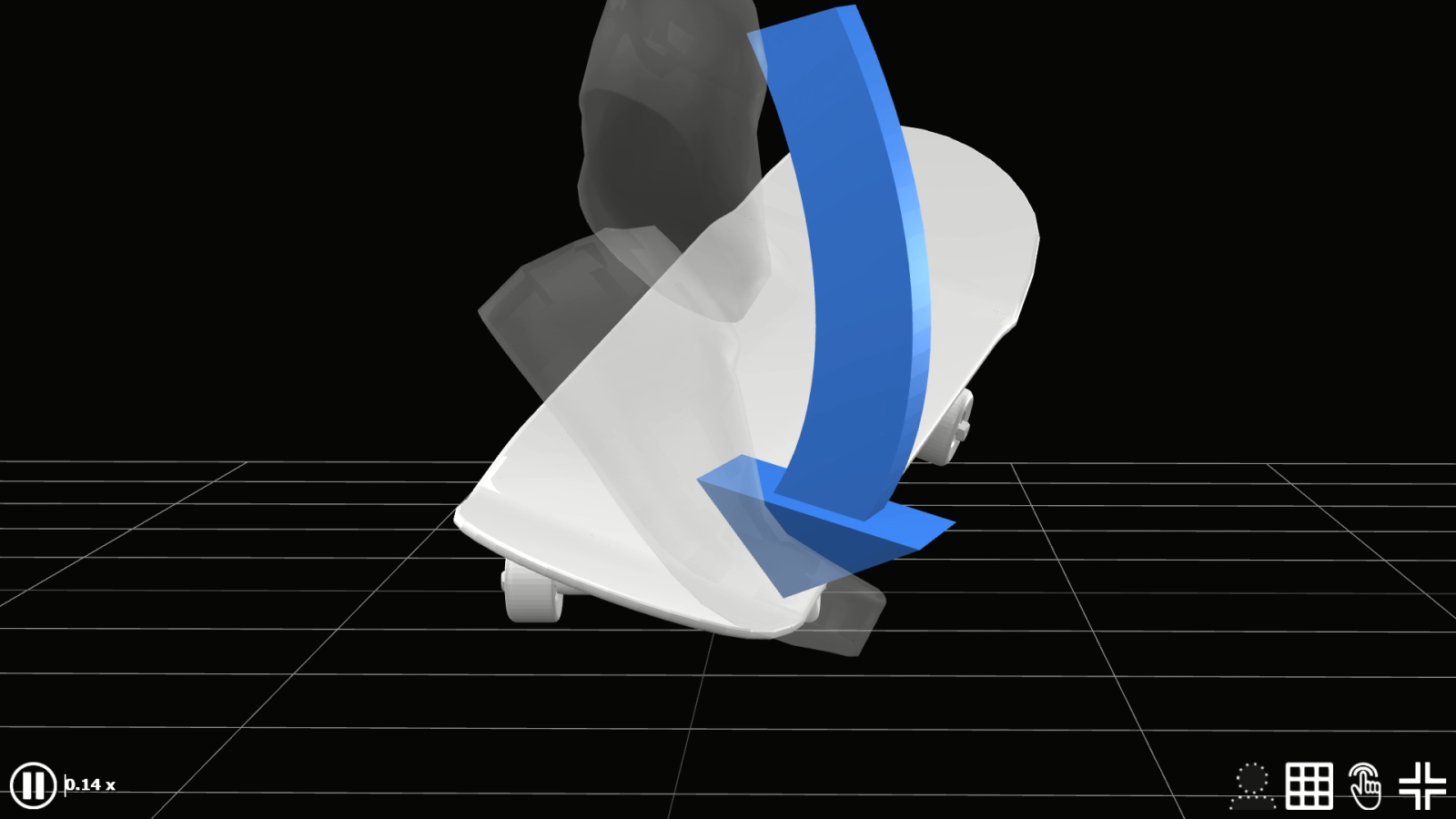
Execution
What do we need to treflip?
Let's also talk about how to do it. Just like I've been saying, Treflips require both:
- Bounce of the rear truck.
- Bounce of the tail.
Although we just need to find a way to put them together, keep this in mind: The Kickflip rotations in Treflips should be mainly generated by the bounce of the rear truck. Although the bounce of the tail accelerates the kickflip rotation a bit, but its main function is to elevate the board, not to flip it.
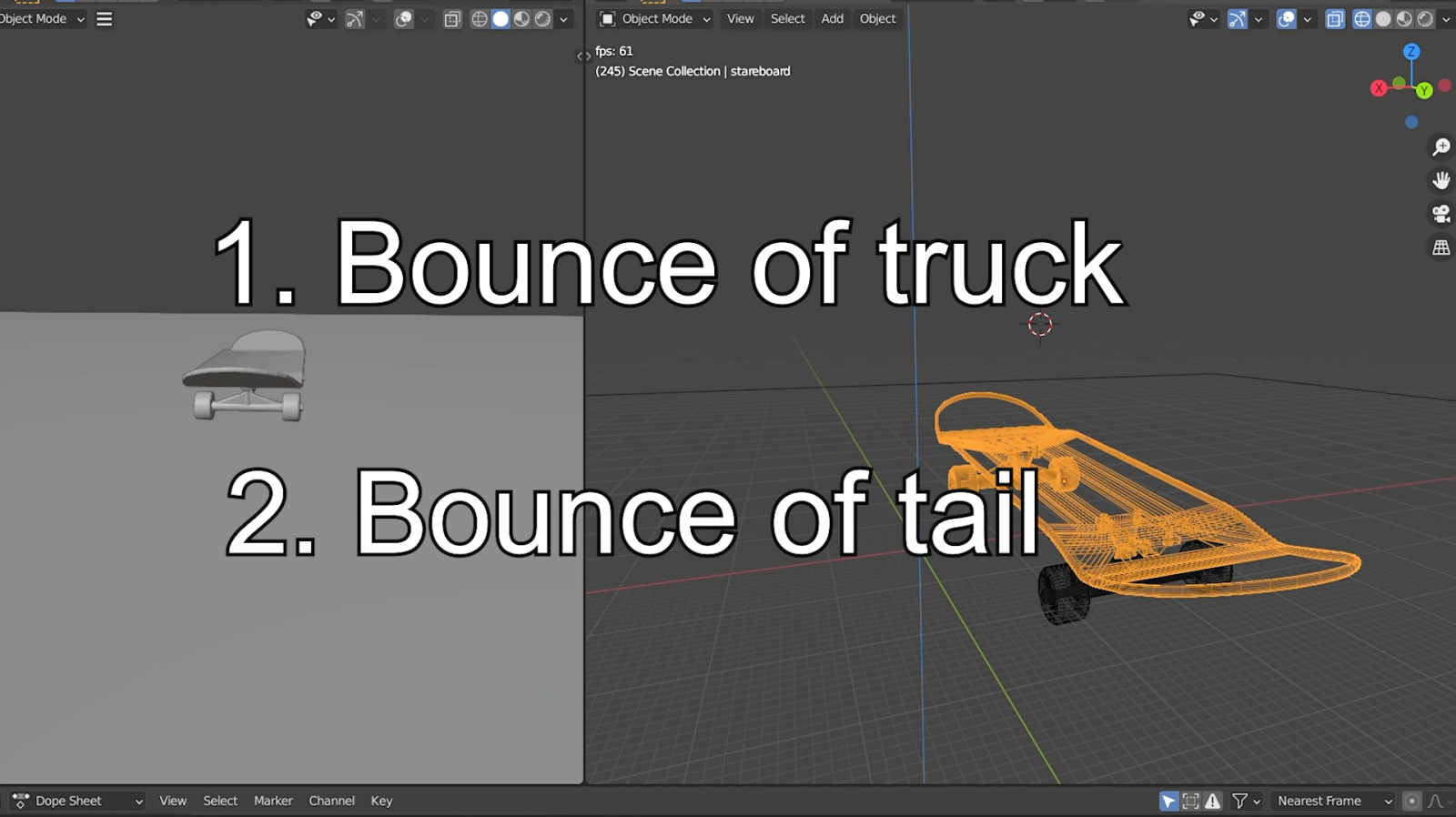
Why do I land upside down?
Plus, as you try to pop harder, the angle of the rear truck tends to become smaller which makes it harder cause the flip. So if you are experiencing a problem that you catch your board upside down when you can spin your board without any problem, then, you might be trying to pop too hard. To avoid this, you just need to focus on the z-axis rotation that we talked about in the previous video.

Do you need to pop while scooping?
You don't even need to think about intentionally popping the tail. Because when you raise your body, your feet will be pushing down the ground in reaction to the body going up. Which means, if you time it right, by focusing only on the z-axis rotation, you will be able to both bend your rear truck and let the tail hit the ground.
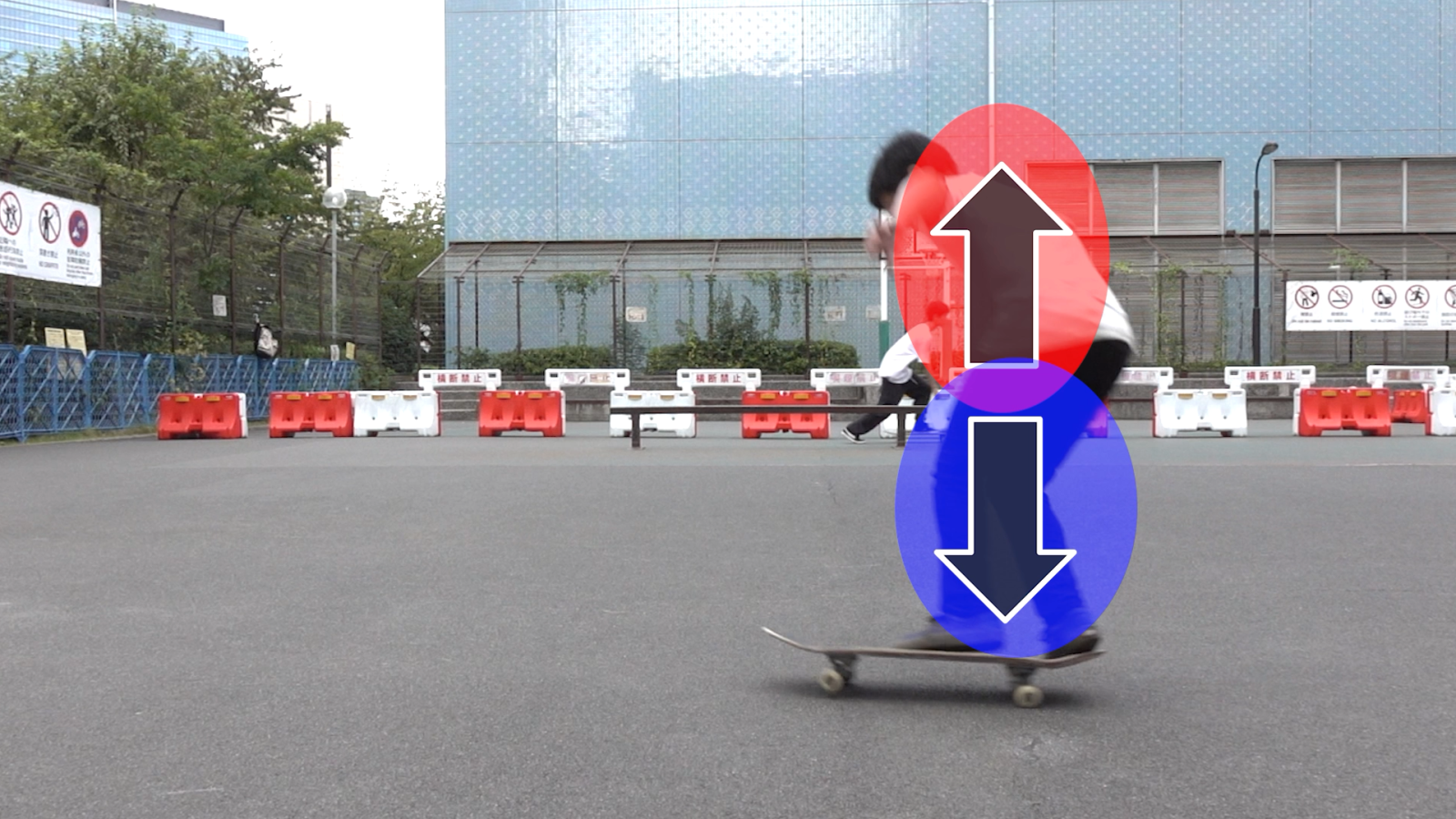

 Convert your video into 3D
Convert your video into 3D Facebook
Facebook Twitter
Twitter



